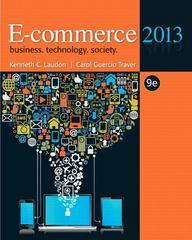Question
The July 2010 BEA Survey of Current Business contains a table on U.S. International Transactions. You can use this link to access the data (the
The July 2010 BEA Survey of Current Business contains a table on "U.S. International Transactions." You can use this link to access the data (the table is on the first page of the PDF file): http://www.bea.gov/scb/pdf/2010/07%20July/0710_itaq-tables.pdf
The table shows that in 2009, U.S. income receipts on its foreign assets totaled $585.256 billion (line 13), while the country's payments on liabilities to foreigners totaled $456.027 billion (line 30). Yet we saw that the U.S. is a substantial net debtor to foreigners. Explain the paradox: how is it possible that the U.S. received more foreign asset income than it paid out on its liabilities?
Hint: Explain the Composition Effect and the Rate of Return Effect
Step by Step Solution
There are 3 Steps involved in it
Step: 1

Get Instant Access to Expert-Tailored Solutions
See step-by-step solutions with expert insights and AI powered tools for academic success
Step: 2

Step: 3

Ace Your Homework with AI
Get the answers you need in no time with our AI-driven, step-by-step assistance
Get Started


